"Star Chain Second Generation", the threat to us?
Author:World Wide Web Time:2022.08.28
Imagine that a traveler was lost in an unmanned area and there was no signal base station around him, but he could take out his mobile phone, go online, call for help. This is an application scenario imagined by Musk's upcoming "Star Chain" plan to launch next year.
Star Chain plans to cooperate with mobile phone operators. "Space Internet" will bring in real life and will bring an Internet revolution? Sure enough, this year, with the Russian conflict, it brushed a sense of existence and attracted people's attention again.
Is it a comprehensive subversive and rewriting the existing Internet governance rules, or is the founder's usual marketing hype?
Is Musk the first step to occupy first and help the United States to win "space competition"? However, in this field, many countries are in hand, and the capacity of the corner is overtaking.
To be sure, space will become a new high point for the next international strategic competition.
01
Two days ago, Tesla boss Musk announced a new cooperation plan.
His company SpaceX will launch the "Star Chain Second Generation" next year to cooperate with US mobile phone operators T-Mobile to provide users with connection services, which will cover the current remote regions of the United States with no wireless signals.
T-Mobile is the third largest operator in the United States and is fully promoting 5G construction.
The two companies said that the new cooperation connection service is to use the wireless spectrum of T-Mobile Company to provide users with a star chain satellite. Before the end of 2023, the SMS service began to provide SMS services in some areas. Data transmission service.
In other words, whether there is a signal tower or a wireless network or not in the "depth of the national park or the vast waters", users can receive mobile phone signals.
T-Mobile CEO Seafite said that after the service was pushed open, T-Mobile users can receive a complete mobile signal as long as they can see the sky.
However, the speed of the network is a bit bad, only 2-4 MBITs, which means that it can only send and receive text messages and perform voice calls, and cannot provide faster broadband services.
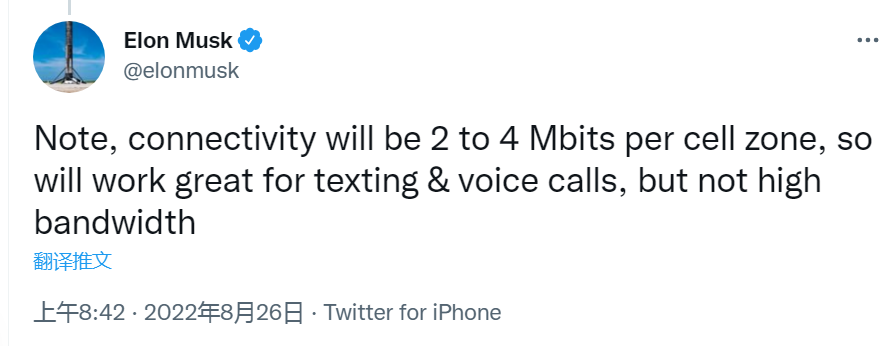
However, if the user is in a region without signal and is urgently needed, it is enough to "provide connections for people in emergency situations." In Musk's words, it has the mission of "saving life".
At the same time, the T-Mobile telephone company will also use mutual benefit services with other countries to allow global users to use the star chain to interconnect.
You know, although the Internet has basically reached various families and the initial realization of people's "global villages", this is only for the remote areas of urban areas and base stations.
There are still many remote regions in the world that cannot get high -speed Internet services, and even in the United States, there are "more than 500,000 square miles" areas, which will be affected by "no mobile phone signal", nearly one -seventh in the U.S. land area.
Musk's star chain provides satellite signals for user terminals on the planet by launching low -orbit satellites, enabling it to connect to the Internet.
The "Star Chain" satellite is the broadband satellite Internet network developed by Musk's SpaceX. The original purpose was to provide Internet access services for users around the world.
Since the launch of the first star chain satellite in 2019, as of now, about 3,000 star chain satellites have been deployed on the nearly orbit of the earth.
According to the idea, the use of satellites can solve the problem of connecting the Internet to remote areas such as deserts or mountain areas, and avoid the construction and costs of a large number of infrastructure, such as cables, masts, base stations, etc.
However, compared with traditional Internet suppliers, the Internet chain's Internet service is a bit high.
In addition to paying $ 99 per month, customers also need to buy a set of $ 549 "Star Chain Equipment".
This set of star chain devices includes a disc shaped antenna and a router required to connect satellites.

When using, place the disc shape outdoors and towards the sky. The router is placed indoors. Then, "Just turn on the power, wait a few minutes, you can go online without any additional debugging."
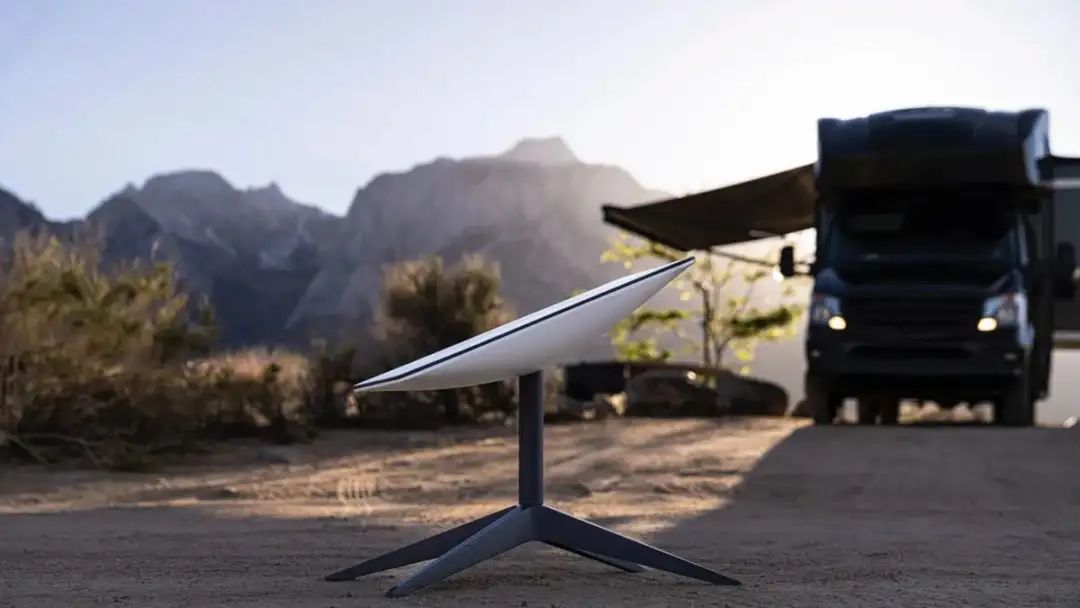
In May of this year, the speed measurement results of the star chain -generation Internet service showed that the download speed reached 301Mbps, which is one of the fastest broadband services at present.
But there are two disadvantages: the upload speed is extremely low and the delay is extremely high.
Musk himself also acknowledged the restrictions of Star Chain services. "It cannot replace the ground base station, because the ground base station will definitely be better than the star chain Internet service, especially the ground base stations in cities and suburbs."
However, according to Musk's idea, the star chain itself does not exist to replace the ground base station. It is "providing basic coverage for the currently completely dead areas."
Although users who can choose more stable and lower -priced Internet services will not choose the star chain, the Star Chain is currently in 36 countries and regions, which are mainly distributed in North America, Europe and Australia.
This number is not large, but the second generation of Star Chain will be launched next year's cooperation projects with T-Mobile may attract more users to use the star chain service to further achieve Musk's goal of "Star Chain covering the world".
This year, SpaceX submitted an application to NASA in the United States to prepare to add 30,000 second -generation satellites. It is expected that in the next time, the total number of deployment of American star chain satellites will reach an amazing 42,000, thereby forming a giant "star chain system" covering the global near -land orbit. It is worth noting that Musk's star chain satellites are not only civilian satellites, but also have a lot of cooperation in military.
In 2020, SpaceX signed a contract to manufacture satellites for the US Department of Defense to produce missile tracking satellites for the Ministry of Defense. Earlier this year, I also provided Ukraine with a star -chain satellite system equipment for military communication.
02
With the banner of eliminating the "dead corner of the mobile network" this time, it seems that it will lead a new round of technological trends in the field of communication. But is this really the case?
Behind the "fire", the star chain is controversial.
Since its inception, the spatial use rights and pollution issues brought by the star chain have been criticized.
As the number of satellites increases, the near -ground track will become particularly crowded, and it is easy to "crash". In July and October last year, the Chinese space station was forced to execute the risk of close contact due to the "star chain" satellite -changing risk due to the "star chain" satellite -changing risk.
The outrageous "touching porcelain" operation of the star chain threatened the safety of Chinese astronauts who executed the task in the space station, and domestic netizens were also very angry about this.
At the same time, foreign experts also pointed out that since 2019, the number of aircraft collision warnings caused by star chains has increased, and now it will cause about 1,600 warnings every week, accounting for half of the total, and other satellite operators are often forced to adjust satellite track.
Not only that, the star chain also causes light pollution and radio signal interference, causing astronomical observation equipment to fail.
Even if these flaws are ignored, the star chain may not be able to solve global communication shortcomings.
The US media pointed out that even if there is a star chain, people who have not been able to enjoy the Internet in remote areas before are still unable to afford the network in the face of expensive service fees. Users estimate that only a small number of people who have affordable costs can be afforded.
It is also reported that the Star Chain has a clear business marketing nature for a long time and has a distinctive personal style of Musk. This time, the cooperation with T-Mobile must also be waiting and treated with caution.
In fact, this year's star chain fame has increased greatly, to a large extent, "marketing" in Russia and Ukraine's conflict.
On February 26, two days after the outbreak of the Russian -Ukraine conflict, Ukraine Deputy Prime Minister Ferdorov asked Musk on Twitter to ask him to solve the network communication problem currently facing in Ukraine. Musk responded on Twitter that the star chain was launched in Ukraine and the ground terminal equipment was on the road.
As soon as this statement came out, the news of "Musk's support for Ukraine" was blown and fired. U.S. Space Command Commander James Dekinson also praised the Star Chain at the Senate Hearing, saying that SpaceX's ability to provide Internet services made the Space Command "look at each other."
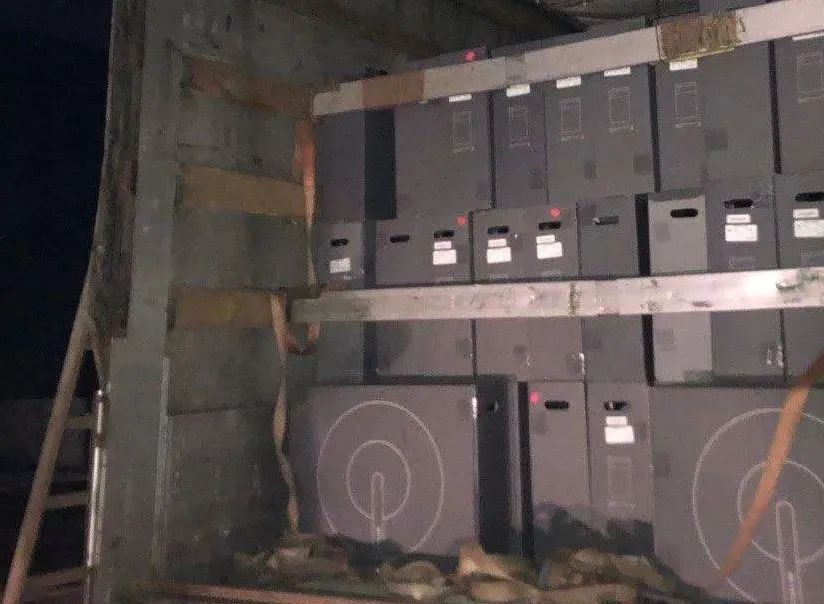
When foreign media often disclose that the star chain plays a "important role" in the Russian and Ukraine conflict. Many rumors are spreading, drowning the true face of the star chain.
In April of this year, a fake news declared that Musk's star chain results guided Ukraine to attack the Russian Black Sea Fleet and eventually led to the "Moscow" sinking, and Russia was therefore destroyed all the star chain satellites in related areas. In this regard, Russia said it was not the case.
In fact, some analysts pointed out that there are only 3 available star chain satellites over the Ukraine, which are mainly used to maintain basic communication. The speed has not been fast fiber, and only data and voice can be sent.
It can be seen that although the star chain has the potential of military use, it is still in the initial stage and is far from providing more military use.
Moreover, NATO's tactical communication satellite system is more professional and mature in all aspects. Ukraine can hold NATO thighs. There is no need to use low -equipped equipment such as star chain.
So this cooperation foreshadows that the Star Chain will monopolize global communication in the future? Musk may not be too smooth.
As a "technical autonomy" defendant, Europe has long been vigilant for the star chain. On December 5, 2021, Ashbarbach, director of the European Space Agency (ESA), warned that "Musk has half of the world's active satellites and forms a monopoly in the space economy, but regulators of various countries have failed to take measures in time "".
He urged European countries to stop Musk's development space for European science and technology companies. The star chain occupies too many satellite communication frequency and rail space, and European companies cannot start fair competition.
France, which is in "technical anxiety", has opened a plan to fight Musk.
In February this year, French President Macron said that Europe has its own satellite communication network, "this is a question of sovereignty and efficiency."
In July, the French communications satellite operator European Communications Satellite (EUTELSAT) and the British and Indian international joint venture "Oneweb" satellite company reached a cooperation to set up a "global leading enterprise in the field of satellite broadband Internet services".
It mentioned that "especially providing services for remote areas that lack fiber", and the direction of cooperation with the Star Chain and T-Mobile is almost the same.
However, some French media analysis said that the chance of this plan was not high. The European Union needs to fully control the satellite system, but the "One Net" satellite company is partly held by British companies. The Britain has been Brexit and does not meet the information security requirements.
However, even if the cooperation is unsuccessful, the "One Net" company, as a global satellite communications company, is not weak in its own. It is expected that the total number of satellites will be as many as 648 in the first generation of constellations this year. Amazon's "Koyber Plan" is also a strong competitor of the Star Chain. The launch plan contains up to 83 launch tasks, and more than 3,200 Internet satellites will be launched with rockets of multiple companies.
Whether the star chain can go further in the future of communication is still to be observed.
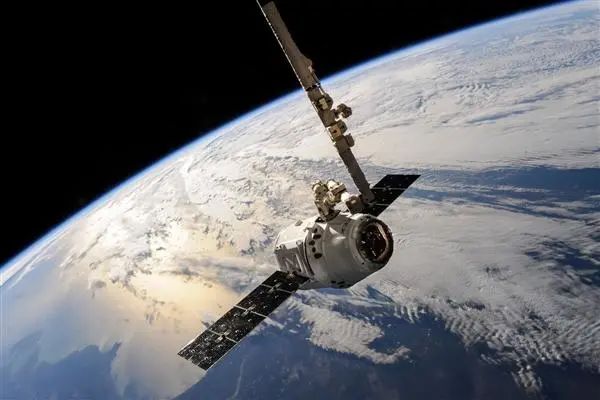
03
In any case, we must admit that the satellite Internet is an important area for humans to explore space and use space.
Prior to this, human exploration of human beings was mainly concentrated in business applications in scientific research, military and special areas.
The satellite Internet is to provide business services to the public, so that more people can feel the results of human exploration of space, whether it is communication technology or remote sensing image.
If the "Star Chain Second Generation" can achieve large -scale commercialization, it will inevitably bring a comprehensive subversive and reshaping on the existing Internet infrastructure, rewrite the existing Internet governance rules, and have a profound impact on global politics and security.
Among them, the most significant challenge is the subversive impact on the network sovereignty of various countries. If the mobile phone and the satellite can be connected directly, it is equivalent to bypassing the information infrastructure of the ground and realizing the global publicization of the network space.
At the same time, users' behaviors and activities on the Internet will also be separated from the supervision of governments from various countries, leading to the hollow of network sovereignty. The impact on politics and security of various countries will be comprehensive.
Moreover, in addition to the commercial behavior of the Star Chain, the US military is now testing the connection between the military aircraft and the star chain. That is to say, the US private commercial aerospace constellation system will have the possibility of supporting relevant military behavior in the future. Once the technical test is tested, the potential of war is worthy of vigilance.
Therefore, although the second generation of the Star Chain will not be smooth, it is worthy of the development trend of the development of the satellite Internet with its business, because once this road is successful, the imagination space will be extremely huge.
At present, in addition to the Star Chain, China, the United Kingdom, the European Union, etc. are already increasing their investment in the Space Internet, and countries have attached great importance to this field at the strategic level.
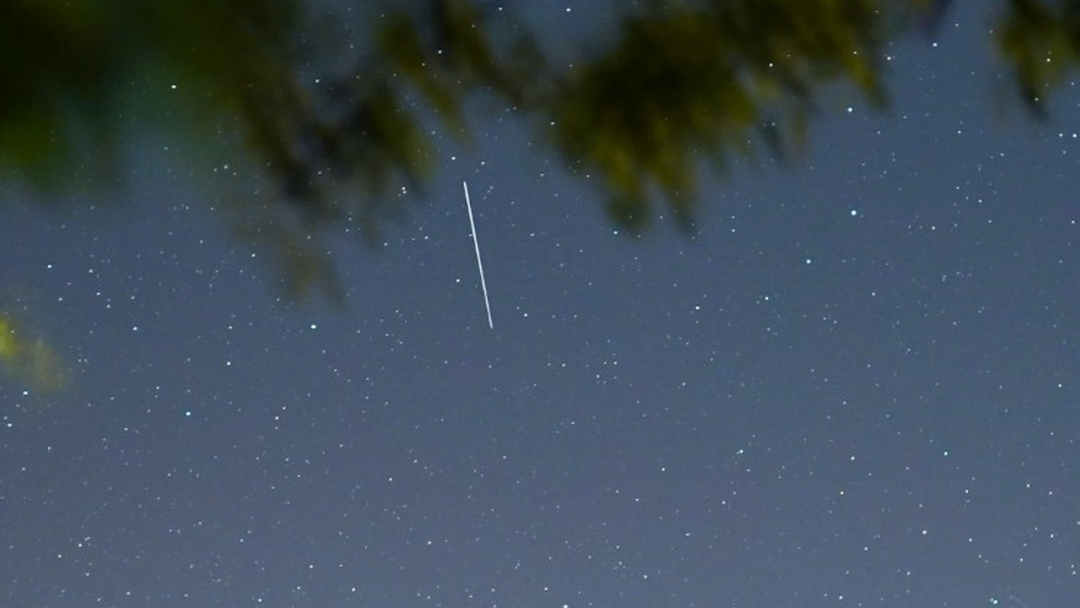
In addition to SpaceX, Amazon also launched the Koyber project. South Korea's Samsung Company also launched the deployment of the Space Internet, and the British network also launched a net space project.
China has always been a pioneer in exploring space and development of satellite Internet. In fact, many domestic institutions have launched a number of low -altitude rail satellites and realized the network network.
For example, the "Hongyan" global satellite constellation communication system launched by China Aerospace Technology Group, on December 29, 2018, the first test star "Chongqing" of the "Hongyan" constellation successfully launched. On March 5, 2022, the "Beiyou-Galaxy" satellite was successfully launched, which verified that my country has low cost, batches, and network operation capabilities necessary for the construction of a satellite Internet giant constellation.
At the same time, China's deployment in 5G and 6G networks is also conducted in an orderly manner. At present, China is already leading the 5G network, and nearly 1 million 5G base stations on the ground have been deployed. The test of the 6G satellite Internet is also underway.
As we all know, the earth's satellite track resources are limited and non -renewable. According to the International Telecom Alliance, the right to use the frequency of satellite and the rails adopts the rules of "first first and first". According to statistics, there are 60,000 satellites that can be accommodated by low -orbits.
Therefore, in this model, whoever can launch more low -orbit communication satellites earlier and faster, whoever can settle in the fierce space competition.
In the future, space will become a new high point for international strategic competition.
(Thank you for your contribution to this article)
Source: Make up one knife/broken water knife nine -life knife little tiger knife

- END -
WeChat is clear!Forbidden to use this public account avatar

/recentlyWeChat account WeChat Public Platform Operation Centermake an announceme...
The man was trapped in the reef for help with the "Moss password".
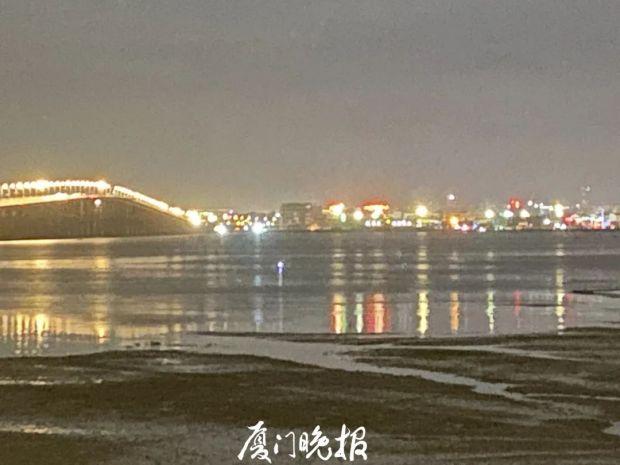
Science Fiction Network August 17th (Wang Xiuxia) Recently, a man in Xiamen, Fujia...